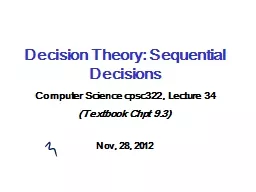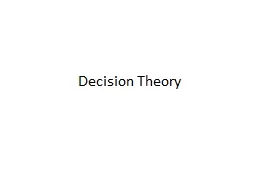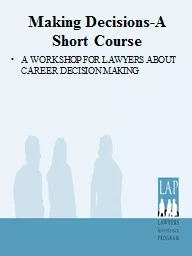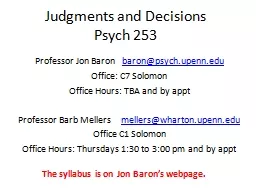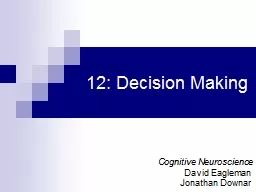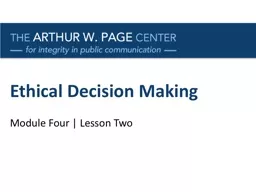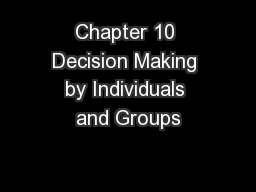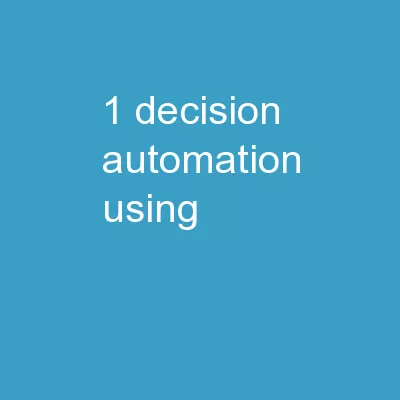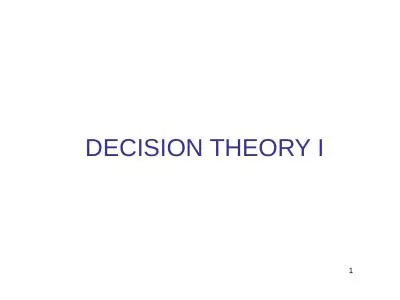PPT-Decision Theory: Sequential Decisions
Author : taxiheineken | Published Date : 2020-06-24
Computer Science cpsc322 Lecture 34 Textbook Chpt 93 Nov 28 2012 Single Action vs Sequence of Actions Set of primitive decisions that can be treated as a single
Presentation Embed Code
Download Presentation
Download Presentation The PPT/PDF document "Decision Theory: Sequential Decisions" is the property of its rightful owner. Permission is granted to download and print the materials on this website for personal, non-commercial use only, and to display it on your personal computer provided you do not modify the materials and that you retain all copyright notices contained in the materials. By downloading content from our website, you accept the terms of this agreement.
Decision Theory: Sequential Decisions: Transcript
Download Rules Of Document
"Decision Theory: Sequential Decisions"The content belongs to its owner. You may download and print it for personal use, without modification, and keep all copyright notices. By downloading, you agree to these terms.
Related Documents

